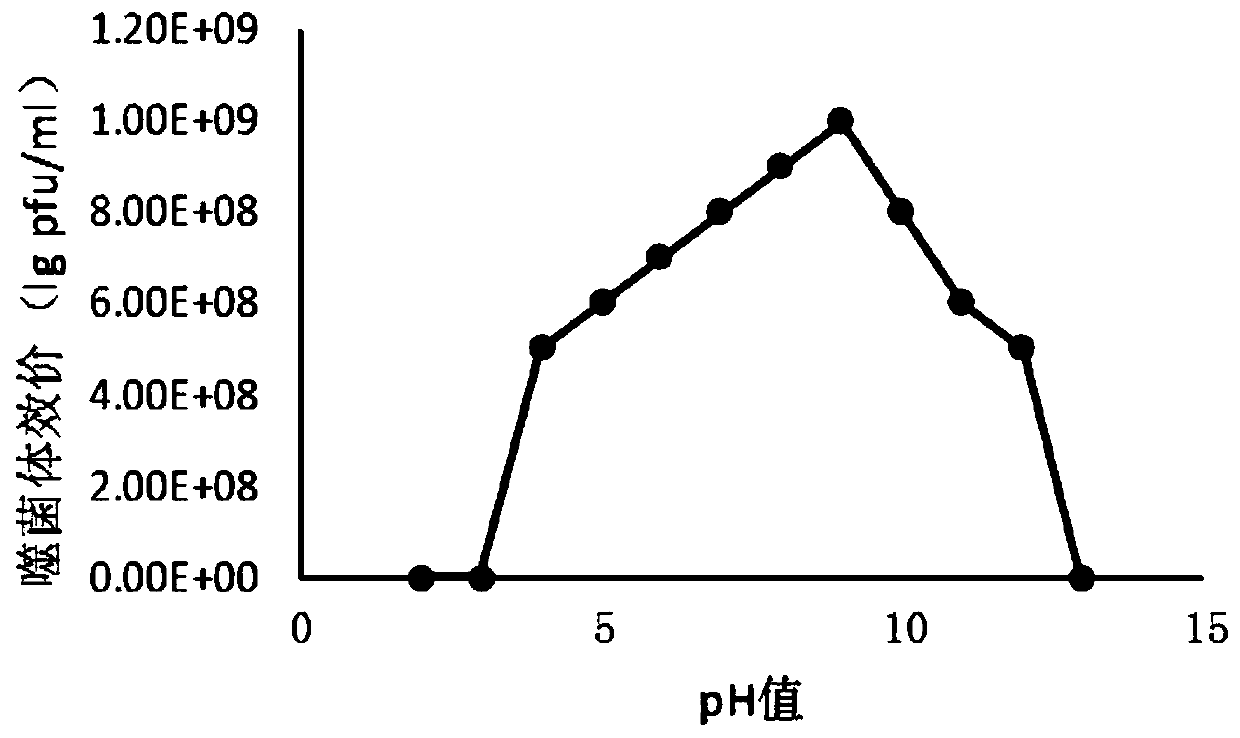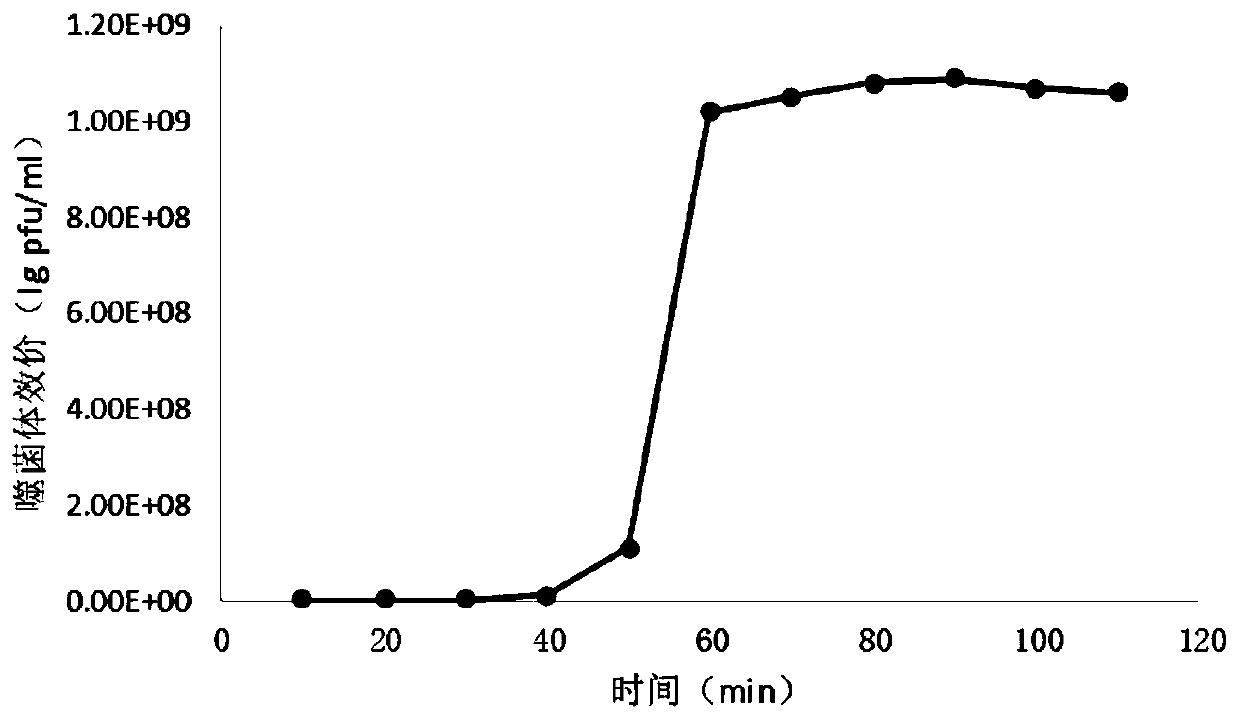Coliphage and application thereof, as well as bactericidal composition and application of bactericidal composition
A technology of Escherichia coli and phage, which is applied in the direction of phage, virus/phage, medical raw materials derived from virus/phage, etc., and can solve problems such as body damage and high drug resistance of pathogenic bacteria
- Summary
- Abstract
- Description
- Claims
- Application Information
AI Technical Summary
Problems solved by technology
Method used
Image
Examples
Embodiment 1
[0051] Phage isolation and purification
[0052] 1. Phage isolation
[0053] The sewage sample was centrifuged in a centrifuge at 4°C to discard impurities, and then filtered through a 0.22 μm microporous membrane to remove bacteria, and the supernatant was retained. Take the supernatant and add it to the LB liquid culture medium together with the host bacteria, at a temperature of 37°C and a rotation speed of 200r / min, and take it out after cultivating for 16-18 hours. Collect the mixed culture solution into a centrifuge tube, put it into a centrifuge at 4°C to remove bacteria, set the speed at 10000r / min, and centrifuge for 10min. The centrifuged phage supernatant was filtered through a 0.22 μm microporous membrane, and the obtained filtrate was the phage stock solution.
[0054] 2. Phage verification
[0055] Pipette 0.1 mL of phage stock solution and 0.1 mL of host bacteria cultured overnight and drop on the empty sterile culture. Pour the LB semi-agar medium at about ...
Embodiment 2
[0074] Determination of Optimal Growth Temperature of Phage
[0075] Adjust the temperature of the water bath in advance, put the phage in the water bath at 10°C, 20°C, 30°C, 37°C, and 40°C for 60 minutes, then take 100 μL of the phage liquid and 100 μL of the host bacteria liquid and use the double-layer agar plate method For the plaque test, after the plate solidified, it was cultured at the corresponding temperature, the experiment was repeated three times, and the culture was cultured for 10 hours or overnight, and the results were observed. Repeat the experiment three times.
[0076] Table 1 Phage plaque morphology at different temperatures
[0077]
[0078] The results of the optimum growth temperature of phage are shown in Table 1 and figure 1 , the results showed that: when the phage was at 37°C, the number of plaques was the highest, and the diameter of the plaques was the largest, that is, the activity was the strongest; below 20°C, the activity decreased rapidl...
Embodiment 3
[0080] pH Stability Experiment of Phage
[0081] Adjust the pH values of the LB liquid medium to 3, 4, 5, 6, 7, 8, 9, 10, and 11 respectively, take 100 μL for each pH value, and add 100 μL of 10 8 The pfu / mL phage solution was mixed evenly and reacted at 37°C for 60min. Take 100 μL from each tube, lay a double-layer agar plate, incubate overnight at 37°C, count the plaques, and determine the titer of the phage. Repeat the experiment three times.
[0082] Table 2 Determination results of phage pH value stability (unit: pfu / mL)
[0083]
[0084]
[0085] The assay result of phage pH value stability is as table 2 and figure 2 As shown, the high activity is maintained at pH 4-12, indicating that the phage has a wide adaptability to the pH value; when the pH value is less than 4 or greater than 12, the activity of the phage decreases rapidly; 8 is the most stable, the highest survival rate, the strongest activity, and its optimum pH value should be 8.
PUM
| Property | Measurement | Unit |
|---|---|---|
| Titer | aaaaa | aaaaa |
Abstract
Description
Claims
Application Information
 Login to View More
Login to View More - R&D Engineer
- R&D Manager
- IP Professional
- Industry Leading Data Capabilities
- Powerful AI technology
- Patent DNA Extraction
Browse by: Latest US Patents, China's latest patents, Technical Efficacy Thesaurus, Application Domain, Technology Topic, Popular Technical Reports.
© 2024 PatSnap. All rights reserved.Legal|Privacy policy|Modern Slavery Act Transparency Statement|Sitemap|About US| Contact US: help@patsnap.com










